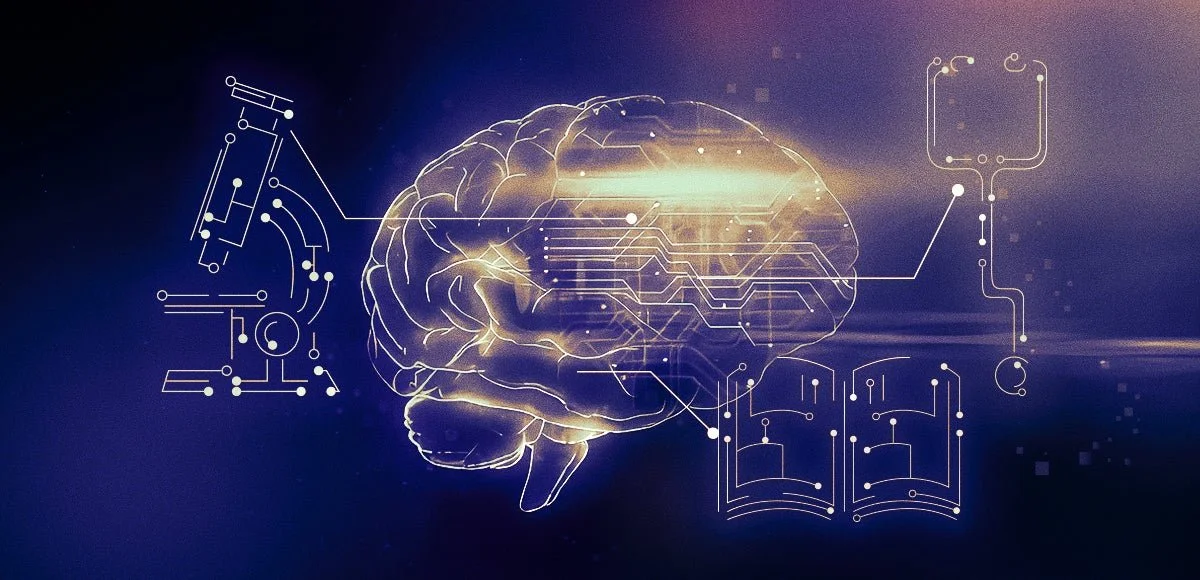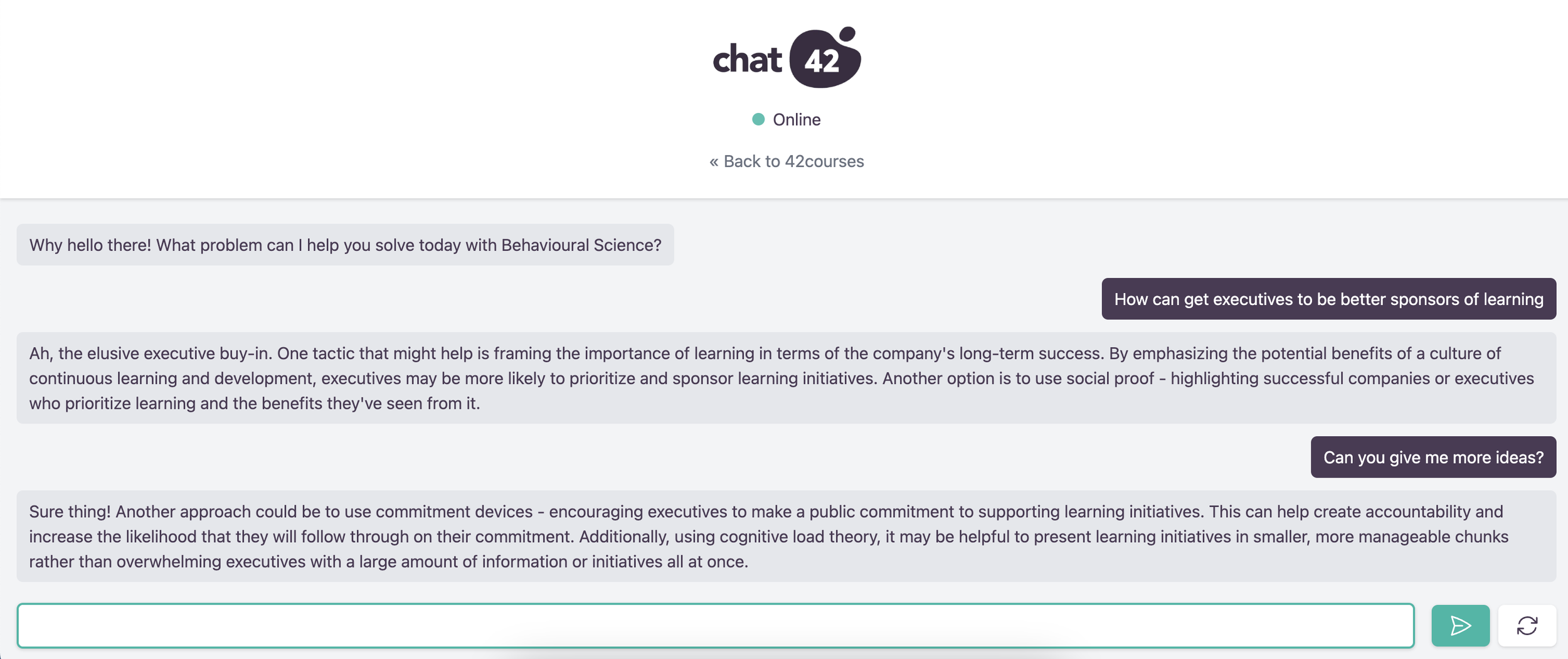AI, education and us
Unless you have been on a prolonged Zen Buddhist retreat with no wifi, you would likely have heard lots and lots of news about all things AI.
Many of you may be a little bit scared by all this. Don’t Panic. Fear of new things is totally normal. We all tend to fear what we don’t understand.
Good news, we’ve been playing around with AI tools for about a year, so in this post, I will tell you how it all works in plain English and what we plan to do with it at 42courses.
How does Chat GPT, Google Bard etc work?
To make it easier, I’ve broken it down into six key steps below.
1. Data Collection: First, you feed lots and lots of data (i.e. websites, books, blogs etc) into a computer. As an analogy, let’s pretend that information was lots of conversations at a dinner party.
2. Tokenization: Next, it breaks down all the information into its component parts. In the dinner party scenario, it would record each word spoken, its frequency, order, and more.
3. Understanding Context: It then starts to work out the context of the data. So, for example, at the dinner party, it could work out that when people say “bat”, sometimes it means a piece of sports equipment and other times it means a flying creature.
4. Prediction: Based on everything it’s read and learned, it predicts what should go next. This means if someone stopped talking mid-sentence at the dinner party, it could guess what they would say next based on what it’s learned from all the other conversations.
5. Iteration: At first, it will get things wrong, but over time it iterates the predictions based on more data to more accurately predict a correct response.
6. Fine-tuning: Once it gets good at general predictions, you can then start to help train it to specialise in certain functions. Using the dinner party analogy, you could help it get really good at jokes or at sharing travel tips or cooking recipes etc.
Basically, it acts like a super-intelligent version of the predicted text function you would have seen and used a million times on your phone.
It’s important you understand that these AI tools don’t really 'understand' the text they are writing or its context in the human sense.
It's like a super-powered parrot that can mimic complex conversation without truly understanding the meaning of the words.
What are we doing with it at 42courses?
These tools will inevitably have a big impact on learning.
While the tools are incredibly impressive, they can also confidently spout a lot of nonsense, so we have been approaching this with caution.
One thing AI can be brilliant at is acting a bit like a mentor.
Great mentors don’t usually give you the answer, they suggest ideas to help you find the correct answer yourself.
So to start with, that is how we are starting to integrate AI into 42courses.
Our first beta test has been to create an AI behavioural Science helper.
We fine-tuned the Open AI model with some of our Behavioural Science course knowledge and gave it a bit of personality.
It’s designed to help you by suggesting behavioural science solutions to the problems you are trying to solve, whether that is a new brief for a customer or just trying to get your better half to help with the cleaning around the house.
The next stage will involve integrating this into the courses so you can use our own custom fine-tuned AI model to help you contextually with the things you are learning.
Our aim is that with our fine-tuning, you will soon be able to ask it for contextual helpful information, e.g. show me more examples of framing used in B2B advertising or help me create some personas for my brand etc.
We’re also looking into how we can enable you to edit the lesson layout using AI so that, whatever your learning style, you can continue to have the best time learning with us.
If you want to play with our current version of AI with Chat42 go to 42courses.com/chat.
Enjoy.







